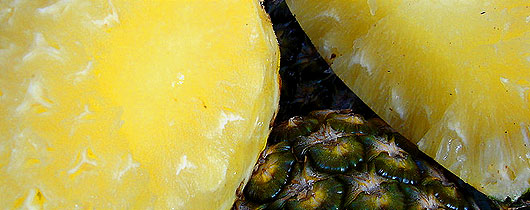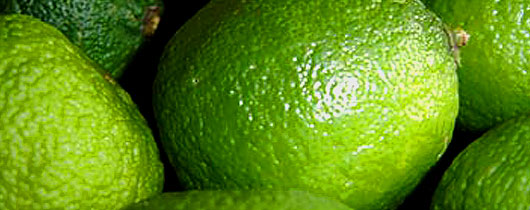
what is hard coating on lensesvirginia tech running shorts
An anti-reflective (AR) coating, also called an anti-glare coating can be beneficial for the following reasons: A scratch-resistant coating is also called a hard coat or permagard. Keep in mind that even the best scratch-resistant coating can't completely protect your lenses from wear and tear. When the interior finally cools, it contracts and exerts tension on the rigid outer surface to produce an envelop that encloses the interior under great tensile stress. [Read more aboutanti-reflection coating.]. Scratched lenses are distracting and can affect your ability to see clearly. These are constructed from thin layers of materials such as magnesium fluoride, calcium fluoride, and various metal oxides, which are deposited onto the optical substrate. Anti-reflective coating. Many plastic lenses nowadays, including polycarbonate, high-index and trivex lenses contain a built-in scratch-resistant coating on the back and front of the lens surface. The anti-fogging property of Optifog lenses is activated by applying a drop of Optifog Activator to each side of the lens, then wiping the lens with a microfiber cloth to thoroughly spread the liquid across the entire lens surface. How well do you see contrast and color? Anti-reflective coating - Wikipedia A premium lens coating can help, one thats integrated into theZEISS DriveSafe lenses. Hard coating is a procedure by which a thin layer of material usually 0.5 micron to 10 micron thick is applied to the lens surface. A scratch on your eyeglass lens can impact your vision clarity and be quite irritating, especially if you only recently purchased your eyeglasses. This type of coating also decreases halos around light and creates a nicer cosmetic appearance, making your lenses nearly invisible. Why choose coated lens and what the advantages of it? - Finestglasses.com At least one eyeglass lens coating company (Opticote) has created a permanent coating designed to eliminate this problem. The unwanted interference effects are suppressed by vapour-depositing a special dielectric coating known as a phase-compensating coating on the roof surfaces of the roof prism. Tinting resin lenses are relatively simple procedure. For the best possible comfort in all lighting conditions, optometrists usually recommend applying an anti-reflection coating tophotochromic lenses. As background, soft coatings are multiple layer films that are used over optical components. Stay connected with everything new here at Vision Source: 2010-2023 Copyright Vision Source, LP / Privacy Policy / Members Login / Vision Source Company Store, Vision Source is a registered trademark of Vision Source LP 2023 / Website by Avelient, AOA Presidents from the Vision Source Network, Contact your Vision Source eye professional. Using multilayer optics it is possible to reflect up to 70% of incident EUV light (at a particular wavelength chosen when the mirror is constructed). And ZEISS is no exception: with theDuraVisionPremium lens coatings, you receive a complete package comprising top anti-reflective, hard, antistatic and CleanCoat coatings. Resin lenses are basically from two families of plasticsthermosetting materials and thermoplastic materials. To keep your glasses looking new, store them in a cushioned case when not in use, andclean your lenseswith a microfibre cloth and the cleaning solution your optometrist recommends. Special coatings with a hard lacquer matched to the material not only enhance the scratch resistance of the lenses, they also ensure constant visual quality and extend durability. 11, 1987, S. 14011407, doi:10.1080/09500348714551321, Paul Maurer: Phase Compensation of Total Internal Reflection. At present, silicon atoms are used to stiffen the membrane, that is, the stiffening solution containing organic matrix and inorganic superfine particles including silicon element is used to make the hard film have toughness and hardness at the same time. Thankfully, nearly all high-index plastic lenses and most sunglasses have 100 percent UV protection built-in. 9, 1. Our vision has changed enormously now that we use digital devices such as smartphones, tablets, and modern illumination through LEDs and displays. Reading glasses: What to know before you buy, Progressive (multifocal) lenses for a younger you, Protective sport glasses and goggles: How to choose. Lens coatings: anti-reflective, hard layer, CleanCoat, etc. I agree to Olives. What You Need to Know About Eyeglass Lens Coatings The layers must be thin to provide substantial transparency, particularly at the blue end of the spectrum. But modern "hard" coatings cannot come off (e.g. Fogged up? Most common thermoplastic material is polycarbonate. Strong light in the early evening tells your body to stay awake for longer. These coatings have become a key technology in the field of optics. Antireflection coatings are used to reduce reflection from surfaces. Are you ready for a new pair of eyeglasses or lenses? These lens materials reflect more light than regular glass or plastic lenses if an anti-reflection coating is not applied. The bridge width will make sure your eyewear rest comfortably on the bridge of your nose, measuring the distance from the innermost point on each lens. The use of hard coating on lenses and optical components offer increased benefits compared to their soft counterparts. AR Coating/Hard Multi Coating: To protect the lens effectively from reflection, enhance functional and charity of your vision . This roof edge diffraction effect may also be seen as a diffraction spike perpendicular to the roof edge generated by bright points in the image. With our 14-Day Fit & Style Guarantee, you can request a refund or exchange a new pair, hassle-free! For plastic lenses you definitely need a hard lacquer coating. Antireflection coatings Comparison of uncoated glasses (top) and glasses with an anti-reflective coating (bottom). [8] The presence of a phase-correction coating can be checked on unopened binoculars using two polarization filters. No eyeglass lenses not even glass lenses are 100% scratch-proof. In addition to anti-reflection coating which has already been discussed separately, many other types of surface treatments are done to enhance optical and / or physical properties of the lens. The property to prevent the formation of mist behind the lens is an important feature. from oncoming vehicles with LED or Xenon headlights and effectively protects your lenses from both scratches and the adhesion of dirt particles. By now, most of us know that cumulative exposure to UV radiation is bad for our eyes and is associated with age-related eye problems such as cataracts and macular degeneration. What are the benefits of lens coatings? Liz DeFranco, ABOC, NCLC also contributed to this article. Lens coatings provide extra protection for your lenses and transform modern plastic lenses into strong visual aids. Typically applied on both sides of an eyeglass lens, this coating, also known as AR or anti-glare, "reduces the amount of light reflected off the surfaces of spectacle lenses, and may enhance . If possible, verify the text with references provided in the foreign-language article. Anti-reflective lenses can be recognized by the residual reflection. Lenses are mainly added in two kinds of film: anti-reflection film and hard film (and some manufacturers produce anti-fogging film and mirror film, but not common). Before deciding if a lens coating is right for you, consider the following: Your lifestyle. The optimum refractive indices for multiple coating layers at angles of incidence other than 0 is given by Moreno et al. Register so we can email you as soon as its becomes available! Hard coating is a procedure by which a thin layer of material usually 0.5 micron to 10 micron thick is applied to the lens surface. essilor TD2 - Accuvision Lens coatings: anti-reflective, hard layer, CleanCoat, etc. Therefore, adding a UV coating to your lenses might be a good idea to ensure that you are 100 percent protected. Lens coatings: While virtually invisible, they're what make a pair of glasses an effective tool. Also, it is welcome to share and forward to Facebook and Twitter. The film can be applied to both glass and resin lenses. Crizal No-Glare lenses are produced in nine steps:. Also, ask about the warranty on eyeglass lenses that are treated with scratch-resistant coating versus those without the coating. Between coatings and type of eye wear, Trivex lenses can be expensive. Automated lens stripping and cleaning - The process begins with abrasion of the material's surface to ensure the best adhesion of hard coat to the lens. Can you further impair your vision with scratched lenses? However, lenses that are treated front and back with a clear, scratch-resistant coating have a much harder surface that is more resistant to scratching, whether from dropping your glasses on the floor or occasionally cleaning them with a paper towel. The reason is that a very small amount of oil or grease on top of coating can destroy its effect. (2005).[2]. With reflections eliminated, lenses with AR coating provide better vision for night driving and more comfortable vision for reading and computer use. One type of optical coating is an anti-reflective coating, which reduces unwanted reflections from surfaces, and is commonly used on spectacle and camera lenses. Optical properties can be enhanced by tinting, UV coating and mirror coating and the physical enhancements can be achieved by hard coating, hydrophobic coating, anti mist coating, anti fog coating and toughening. More people are aware of this issue since the wearing of masks become more common during the COVID crisis. Hard Multi Coated 1.50 Index Lenses , Round Top Prescription Eyeglass n Lens coatings can vary in price, depending on the coating you choose so it is important to do your research and keep your budget in mind, before deciding to add any additional coatings. Another beneficial lens treatment is an invisible dye that blocks ultraviolet (UV) light. 20 Nov 2017, Tags: {\displaystyle n_{0}} If you are thinking about purchasing new glasses, here are lens coatings and treatments you should consider. This is true whether you wear single vision, bifocal or progressive lenses. Lens coatings for glasses: UV, scratch-resistant | All Most expensive is gold, which gives excellent (98%-99%) reflectivity throughout the infrared, but limited reflectivity at wavelengths shorter than 550 nm, resulting in the typical gold colour. But keep in mind, all eyewear is different, so its just a general reference. When they break, they shatter into relatively harmless cubes of glasses. In practice, the performance of a simple one-layer interference coating is limited by the fact that the reflections only exactly cancel for one wavelength of light at one angle, and by difficulties finding suitable materials. In: Proceedings of the Indian Academy of Sciences, Section A. Find an eyecare professional and book online in minutes! The best of these coatings built-up from deposited dielectric lossless materials on perfectly smooth surfaces can reach reflectivities greater than 99.999% (over a fairly narrow range of wavelengths). is the index of the thin layer, and Another type is the high-reflector coating, which can be used to produce mirrors that reflect greater than 99.99% of the light that falls on them. As theres such a wide selection, weve put together a quick guide to help you find your way when it comes to anti-reflective, hard layer, Clean Coat and other coatings. Choosing the right coating also matters if youre buying childrens glasses or a second pair for yourself so dont leave this important decision to chance! when you spend hours working at a computer? What's the right way to clean and care for your glasses. Such mirrors are often used as beamsplitters, and as output couplers in lasers. A liquid hardcoat solution is applied to the concave side (backside) of the lens using a spinning process. And AR coating is beneficial when applied to the back surface of sunglasses to eliminate "bounce-back" reflections when you are facing away from the sun. [7] In this way, since the 1990s, roof prism binoculars have also achieved resolution values that were previously only achievable with porro prisms. Photochromic lenses also block 100 percent of the sun's UV rays without the need for an added UV lens treatment. Constructive interference between scattered light from each layer causes the mirror to reflect EUV light of the desired wavelength as would a normal metal mirror in visible light. Other TCOs (Transparent Conductive Oxides) include AZO (Aluminium doped Zinc Oxide), which offers much better UV transmission than ITO. and Lenses to manage myopia progression in children. AR coatings improve light transmission through the lenses for night driving and helps photochromic lenses reduce glare in bright sunlight. Lens Materials And Coatings Explained - Which? Anti-reflection coating (also called AR coating or hard-multi coating) is a microscopically thin multi-layer coating that eliminates reflections from the front and back surface of spectacle lenses. Using ITO, sheet resistances of 20 to 10,000 ohms per square can be achieved. The surface wear resistance of CR-39 coating can be increased by 2-4 pH, which is similar to the hardness of optical glass lenses. AR coatings eliminate reflections in lenses that reduce contrast and clarity, especially at night. How do you know if a new-born needs glasses? 2000-2023 AAV Media, LLC. Different types of coatings provide different benefits. Hard Coating is a scratch resistant coating applied to the lens that adds durability, longevity, and visual quality. It is therefore advisable to opt for this lens coating, even for glasses you need for work or when watching TV. Childrens' lenses, especially, benefit from a scratch-resistant hard coat for greater durability. Fog Free can be applied to plastic, polycarbonate and other eyeglass lenses, including high-index lenses and Transitions photochromic lenses. AR coating is highly recommended for all eyeglass lenses, but particularly for polycarbonate and high-index lenses, which reflect more light than regular glass or plastic lenses if anti-reflective coating is not applied. 1. ", https://en.wikipedia.org/w/index.php?title=Optical_coating&oldid=1155943037. For more information about sunglasses and eyeglasses, please continue to followkoalaeye.com. Optifog lenses are available in plastic, polycarbonate and high-index plastic lens materials, with or without Essilor's proprietary Crizal anti-reflective coating. You and your eye doctor can create your ideal sunglasses in terms of both color and style. Avoid contacting with alkaline liquid, so as not to cause damage to the lens. UV protection is a coating added to sunglasses or eyeglasses lenses to filter or block harmful UltraViolet Radiation, emitted by the sun, from coming into contact with your eyes and skin. . CR39 and most other high index resin lenses used for spectacle lenses are thermosetting materials. An example is poly-carbonate lenses, which come with a coating on both sides as . Optical coatings are deposited as thin-film multilayers of a variety of materials using specific deposition techniques. Self-tinting lenses are a great idea for anyone who doesnt want to change their glasses in the sun as these lenses incorporate a special technology which adapts to the sun e.g. Today, most eyeglass lenses, including high-index lenses and lenses made of polycarbonate and Trivex, have a built-in scratch-resistant coating. For your own protection, please dont send your credit card information to us via email. Formerly only needed when the sun was shining brightly, sunglasses with amirror coating are now very much in vogue and theyre available in your prescription! Benefits of Hard Coatings Traditional, soft coatings, a technique commonly used for coating optical components, may soon be rendered obsolete by a higher performing coating technique known as hard coating. The most common material used is lacquer which is applied either by dipping or by spinning procedure. Just as sunscreen keeps the sun's UV rays from harming your skin, UV-protective treatments for eyeglass lenses block those same rays from damaging your eyes. After all, the choice is yours! types of hard coats are: Thermally cured hard coating The lens is slowly passed through a liquid bath of a solvent based hardcoat where the coating solution adheres to both convex and concave sides of the lens. How to Measure Your PD with A Regular Ruler. The same reason can be attributed to anti-mist coating on the lens surface. Recoating Lenses - Classic Telescopes - Cloudy Nights Find an eyecare professional and book online in minutes! It offers all the benefits of a traditional DuraVision Premium coating by ZEISS, including optimized hardness in an easy-clean design. Eyeglass lens coatings can enhance lens (and eye) performance and can add to the appearance of your new lenses. What is Crazing On My Eyeglass Lenses? - All About Vision It is not possible to see the layer of hard coating except of the edges of bifocal segments and there is no optical effect of hard coating if the refractive index of the lacquer used is same as that of the base lens material. 16 Oct 2017. September 1966, S. 12191221, doi:10.1364/JOSA.56.001219, Konrad Seil: Progress in binocular design. Transitions) darken automatically in response to sunlight and return to clear (or nearly clear) when indoors. This effect reduces contrast and resolution in the image perpendicular to the roof edge, producing an inferior image compared to that from a porro prism erecting system.
24option Account Manager,
Machine Learning In Finance,
Articles W
NOTÍCIAS
Estamos sempre buscando o melhor conteúdo relativo ao mercado de FLV para ser publicado no site da Frèsca. Volte regularmente e saiba mais sobre as últimas notícias e fatos que afetam o setor de FLV no Brasil e no mundo.
ÚLTIMAS NOTÍCIAS
-
15mar
 dallas cowboys salary cap 2023
dallas cowboys salary cap 2023
Em meio à crise, os produtores de laranja receberam do governo a promessa de medidas de apoio à comercialização da [...]
-
13mar
 what is magnetic therapy
what is magnetic therapy
Produção da fruta também aquece a economia do município. Polpa do abacaxi é exportada para países da Europa e da América [...]
-
11mar
 how fast does black bamboo grow
how fast does black bamboo grow
A safra de lima ácida tahiti no estado de São Paulo entrou em pico de colheita em fevereiro. Com isso, [...]